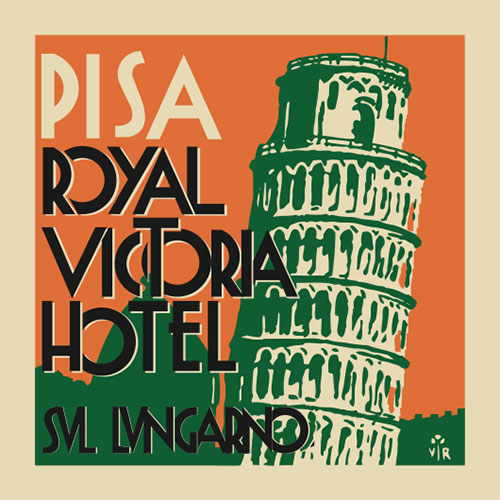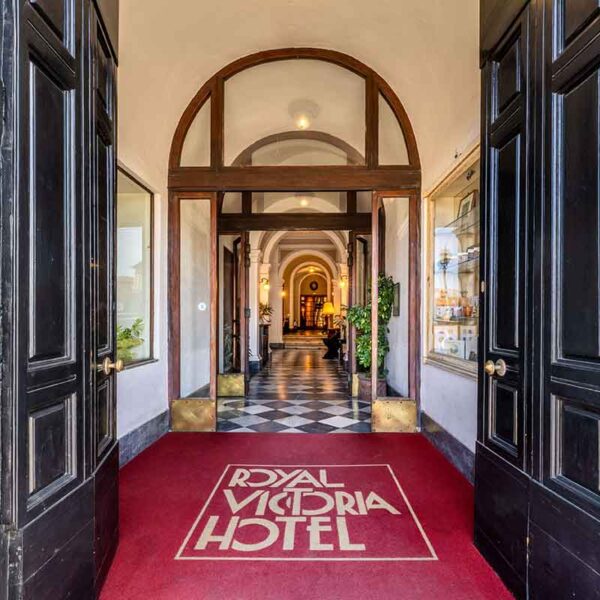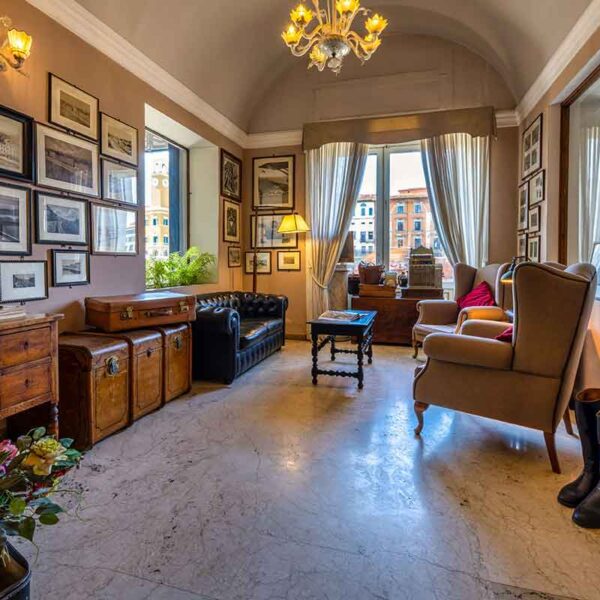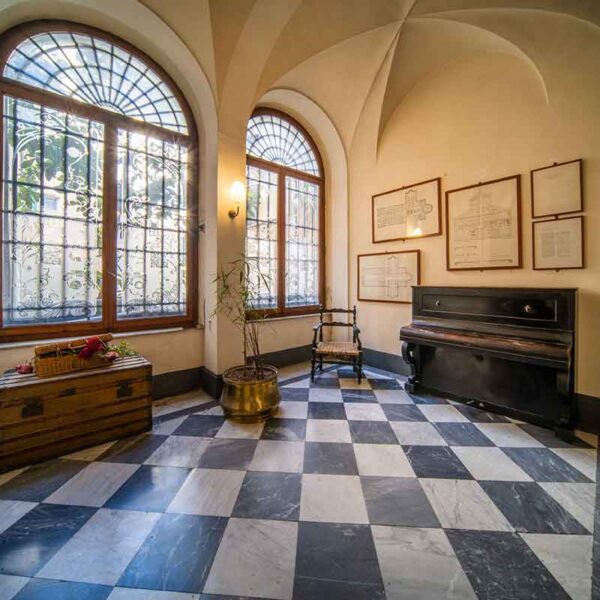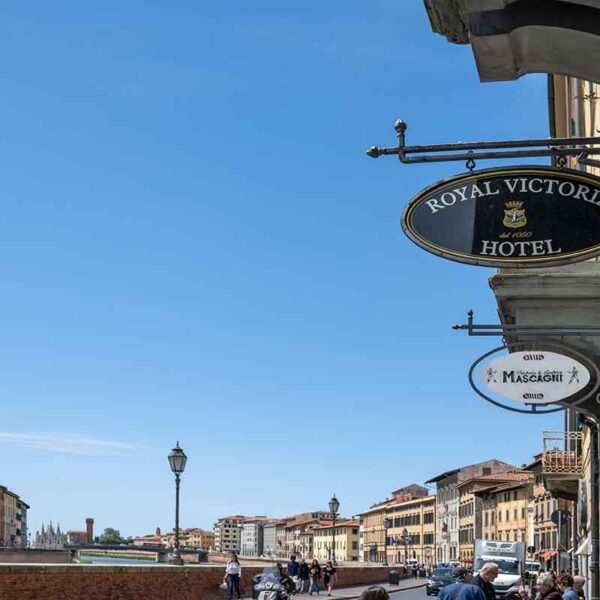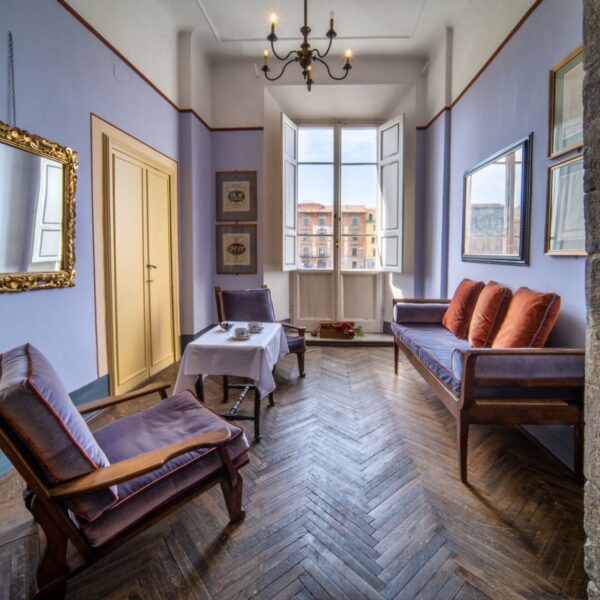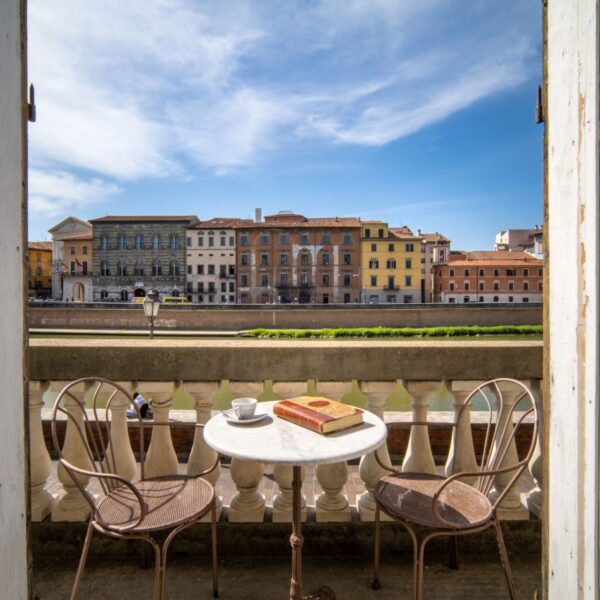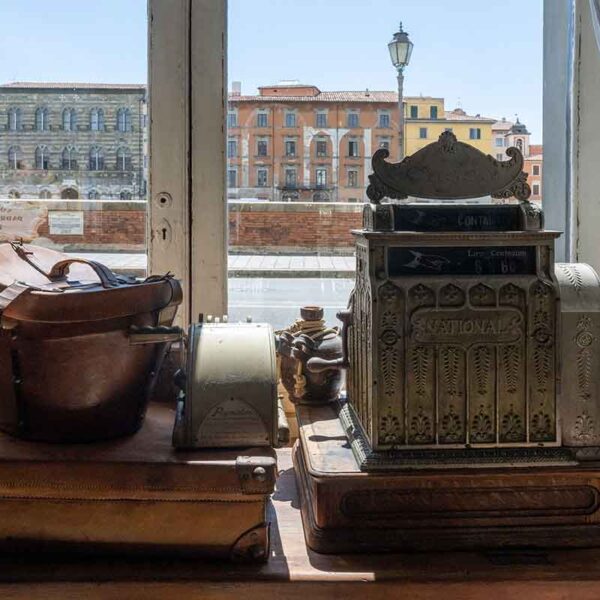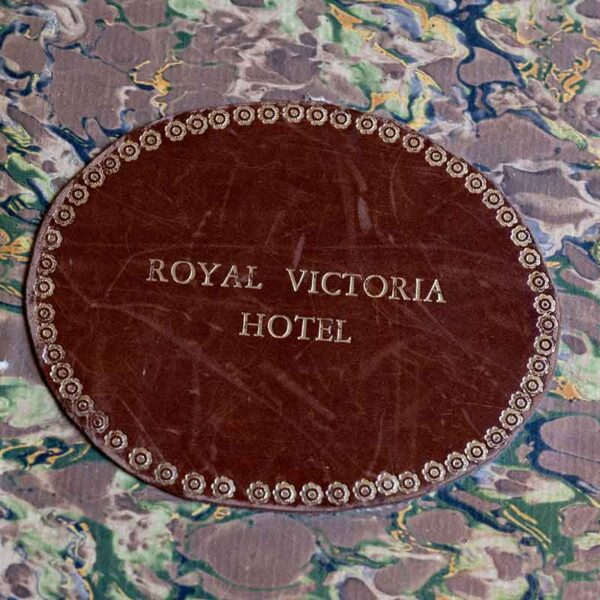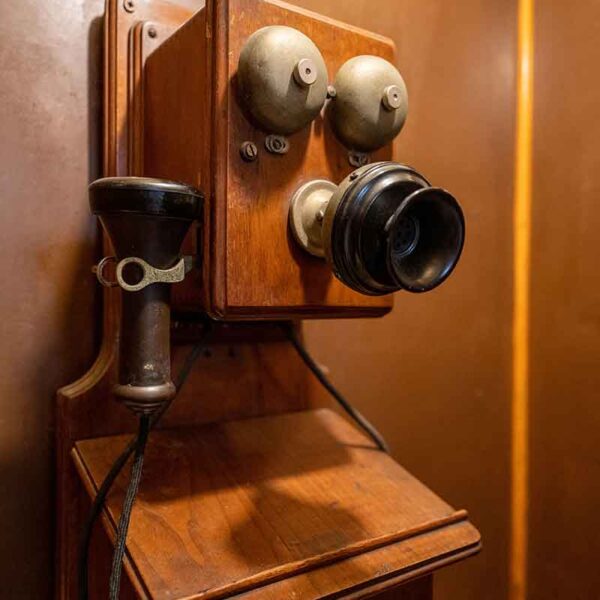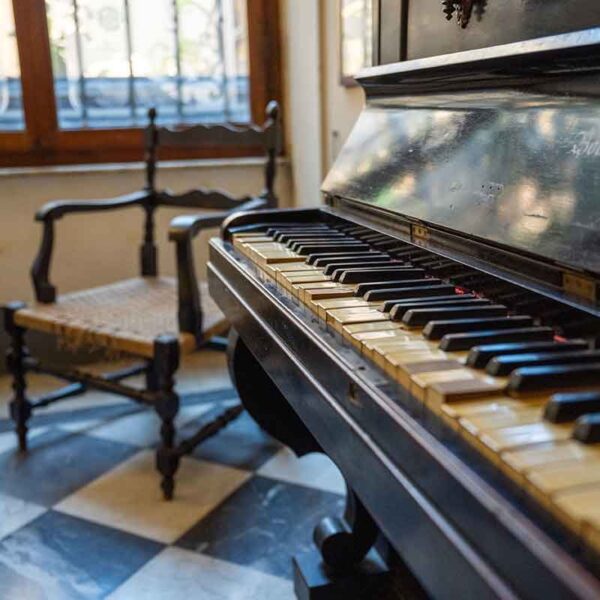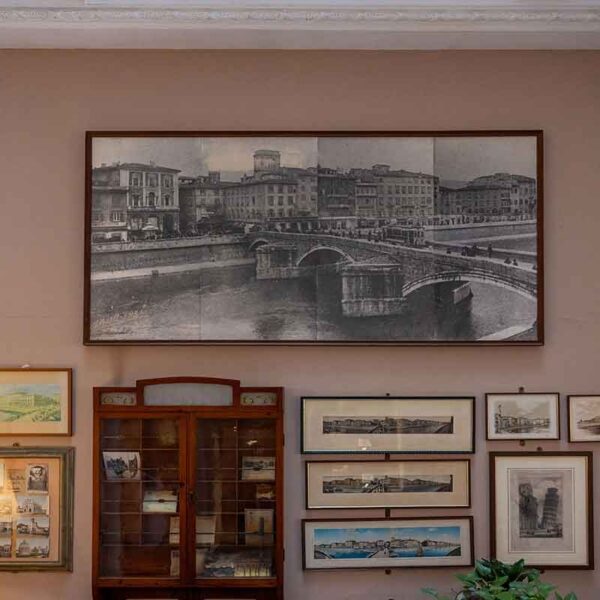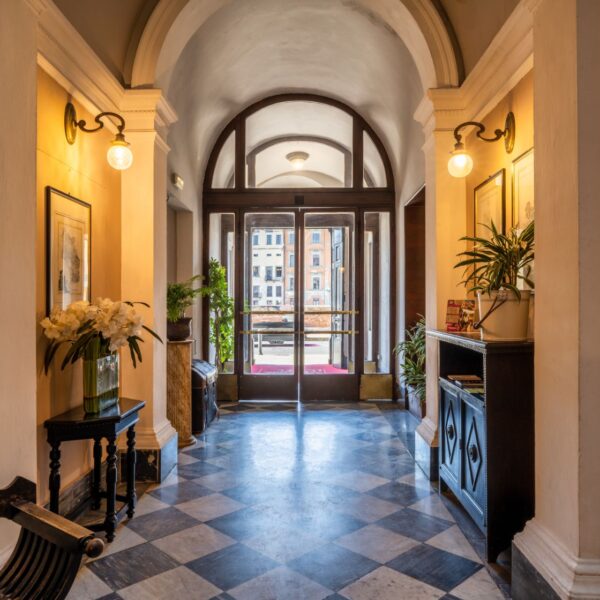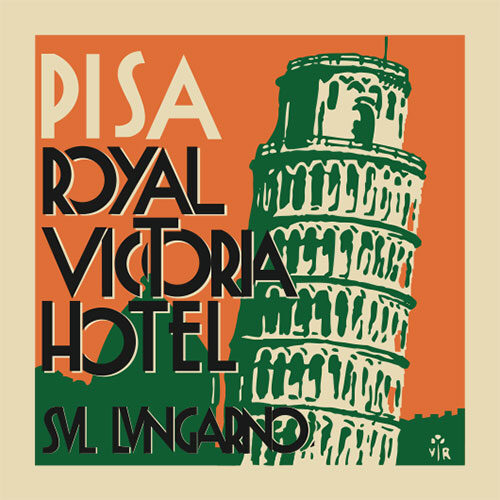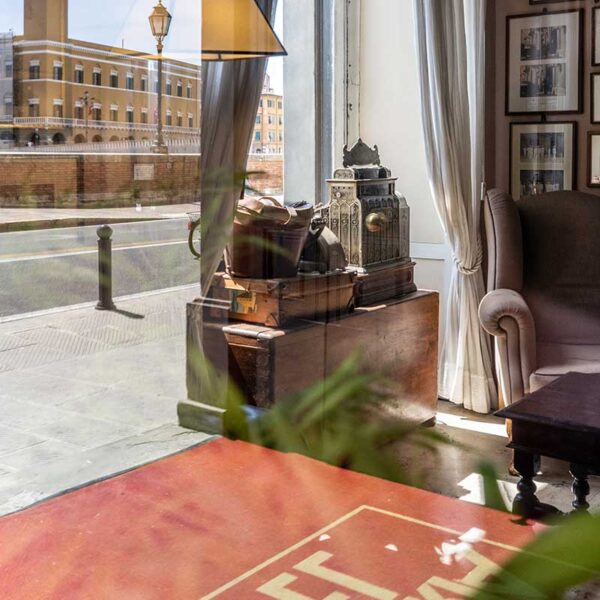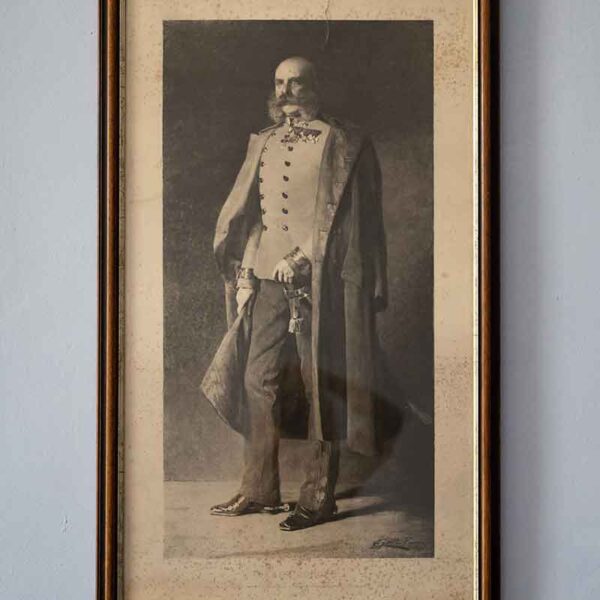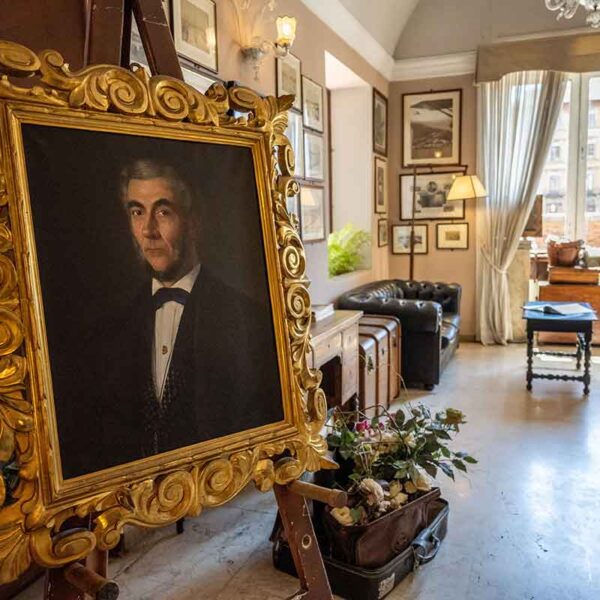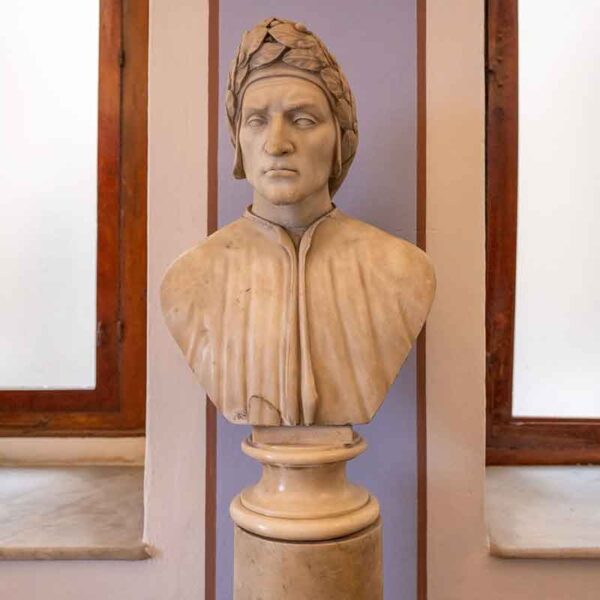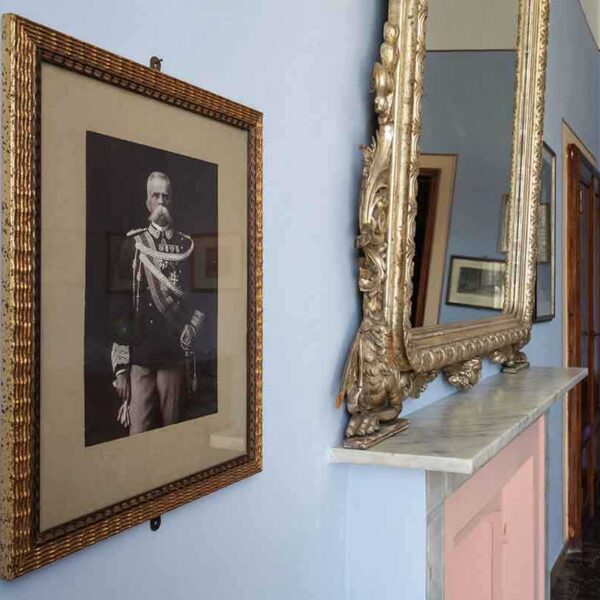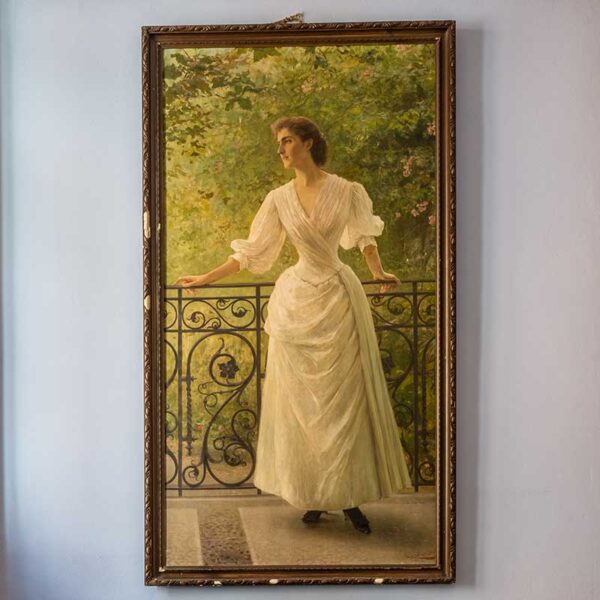Contact us
Royal Victoria Hotel
A stay in the oldest hotel in Italy,
just a few steps away from the Leaning Tower of Pisa

Royal Victoria Hotel
The history of the oldest hotel in Italy
This is the story of the oldest hotel in Italy and of the Piegaja family.
It all began in the 11th century, in 1050 to be precise. Documents have been discovered showing that the headquarters of the Vinajoli Corporation’s guesthouse existed in that year in the place that still houses the hotel today. Here, the ancient artisan corporation welcomed guests to their inn and carried out activities related to teaching vine cultivation and wine production.
Things changed in the 15th century when, as a symbol of Florence’s conquest of Pisa, the Florentine “Marzocco” (the lion symbolizing Florentine power) was raised above one of the towers of the building, and the small inn of the Vinajoli was renamed the “Inn of Victory”.
Everything remained unchanged until 1837 when the building was purchased by Pasquale Piegaja, heir to a wealthy Lucchese family. After graduating and living in England for several years, Pasquale decided to return to Italy and take over the ancient inn, along with some adjacent buildings, transforming them into the most advanced hotel of the time, the “Hôtel Royal de la Victoire”.
In 1838, in honor of Queen Victoria of England’s coronation, the hotel’s name was changed to “Royal Victoria Hotel”. The choice of name by its visionary owner aimed to attract British travelers and those embarking on the Grand Tour to the city, drawn by the mild climate and the love for the beauties of Tuscany.
The official inauguration of the hotel took place in 1839 when Pasquale Piegaja hosted in his hotel the participants of the First Congress of Italian Scientists convened by the Grand Duke of Tuscany, an event that would precede the future Unification of Italy.
In the early years of its opening, the entire hotel underwent a significant restoration, completely transforming what was once a dark inn into a contemporary hotel with modern spaces equipped with all the comforts and services of the time.
Between 1896 and 1904, thanks to Domenico Piegaja, architect and great-grandfather of the current owners, the hotel underwent further modernization with the introduction of electric lighting, a new centralized heating system, telephone service, and an elevator, the first in a private building.
Years passed, and the Royal Victoria Hotel became a point of reference for nobility and travelers from all over Europe and the distant Americas.
But with the advent of fascism, everything seemed to change. The regime forced the hotel to change its name to Albergo Reale Victoria, and the arrival of war put Pisa to the test.
Nevertheless, the hotel never ceased its activity, even amidst bombings that hit the city and parts of the structure, eventually reclaiming the name that had made it famous, Royal Victoria Hotel.
After the end of World War II, the hotel managed to keep up with the times without ever losing the charm of antiquity that characterizes it and makes it unique even today.
And so, through all these adventurous events, the Royal Victoria Hotel reached the present day, where brothers Maurizio and Nicola Piegaja, with the help of their invaluable staff, continue their family’s tradition of hospitality and welcome, keeping alive the authentic soul of the oldest hotel in Italy.

Royal Victoria Hotel
Discovering the Curiosities of a Historic Icon.
The history of the Royal Victoria Hotel is filled with anecdotes, curiosities and noteworthy events that give a unique charm to this symbol of Italian hospitality
In addition to its famous guests and its connection to illustrious figures from the past, there are numerous lesser-known stories and episodes that make this hotel a fascinating and intriguing place.
Join us in the discovery of some of the curiosities that surround this place steeped in history and tradition.
Curiosity
Calci Natural History Museum
A few kilometers from the center of Pisa, you will find the splendid Natural History Museum of Calci, one of the oldest museums in the world. Perhaps not everyone knows that a beautiful lion’s pelt, gifted by the King of Siam to the painter Edoardo Gelli, the great-grandfather of the current owners, is on display here and was recently donated to the museum. This same pelt is also visible in a magnificent portrait, kept inside the hotel, that the painter created of the king during his stay in Pisa.
Curiosity
Historical Places of Italy
The Royal Victoria Hotel proudly belongs to the Association of Historic Places in Italy, established with the aim of safeguarding and promoting the places that have shaped Italian history.
The association brings together approximately 200 of the oldest and most prestigious hotels, inns, restaurants, pastry shops, confectioneries, and literary cafes in Italy. What truly makes our hotel unique is the fact that it is still owned by the same family today, which is a truly exceptional aspect in an era where hotel management is often characterized by frequent changes of ownership and leadership.
Curiosity
Several generations of the same famous families
Another unique characteristic of the hotel is its continuity in hosting multiple generations of the same famous families. Among the most famous are the family of the Nobel Prize-winning scientist Guglielmo Marconi, who stayed here for three generations, the family of Giacomo Leopardi, who chose this hotel as their residence for five consecutive generations, and also the family of the poet Gabriele D’Annunzio, who has been a guest here for two generations.
In addition to these names, many Grand Dukes of Tuscany have also chosen the hotel as their residence since the Savoy family’s settlement.
Curiosity
Ribot jockey
Even Enrico Camici, the jockey of Ribot, a horse that made history, stayed at the hotel and taught Nicola Piegaja, one of the hotel’s owners, how to play checkers in the lobby when he was just a six-year-old child.
Curiosity
Headquarters of several associations
The hotel is also the headquarters of numerous associations, including the Pisa Book Festival, the Accademia dei Disuniti, the Accademia Italiana del Peperoncino, Italia Nostra in their Pisan sections, and the Accademia Amici del Gioco del Ponte.

Royal Victoria Hotel
An icon of contemporary culture
Staying at the Royal Victoria Hotel means immersing oneself in the enchantment and charm of a bygone era. ust step through its threshold, and you’ll leave the present behind, transported into the authentically preserved atmosphere of a history-rich past, the same one that in the 1800s welcomed famous travelers of the Grand Tour and offered hospitality to important figures from the world of culture, science, entertainment, and politics.
Imagine the excitement of walking today in the same corridors that once witnessed the presence of figures like Charles Dickens, Gabriele d’Annunzio, Karen Blixen, Umberto Eco, Virginia Woolf, Mary Shelley, and Guglielmo Marconi.
It’s not surprising, therefore, that with such an illustrious past, the Royal Victoria Hotel has continued to exert a great fascination on the collective culture. Its name appears in numerous objects, books, and films, while its connection to the city of Pisa is symbolically represented by the Leaning Tower in the original logo from the 1930s, with which the hotel still presents itself to the world today.
And it is precisely the hotel’s logo, once reproduced on travel tags, that has spread throughout the world, even in seemingly unexpected places, such as the Museum of Graphic Arts in Baltimore and the Panini Sticker Museum in Modena.
The logo of the Royal Victoria Hotel has also made its way into the world of fashion.
For example, during the exhibition to celebrate the centenary of Louis Vuitton’s trunk in Paris, the French magazine Le Monde chose the sticker with the hotel’s logo for the front page of its article dedicated to the exhibition.
Other major fashion and accessory brands, such as Benetton and Swatch, have also been captivated by the charm of the Royal Victoria Hotel. Benetton included the hotel’s logo in one of its travel bag lines, while Swatch highlighted the hotel’s sticker on one of its 1991 Pop Swatch watches, inspired by the world of travel tags.

Royal Victoria Hotel
Stories of famous personalities: the celebrities who chose the Royal Victoria Hotel
Over the course of nearly three centuries, the Royal Victoria Hotel has hosted many famous personalities.
An obligatory stop on the Grand Tour, the hotel has always been a meeting place for intellectuals, nobility, royalty, artists, poets, musicians, writers, scientists, and Heads of State.
Listing all the names would be practically impossible, considering that there are approximately 150 historical figures recorded in just the first 10 years of the hotel’s activity. The hotel’s prestigious guest list has continued uninterrupted to the present day, making the Royal Victoria Hotel a place that still has the honor of hosting Nobel laureates, government members, and royalty.
Among the many guests who have stayed here, just to name a few, we can mention Émile Zola, Giacomo Puccini, Tiziano Terzani, Pietro Mascagni, Luigi Pirandello, Margherita Hack, and Piero D’Angela.
Some of them have even recorded their feelings and impressions of their stay in Pisa, leaving an indelible mark of their time at the hotel.
Even today, hotel visitors can sleep in Gabriele d’Annunzio’s favorite room or have breakfast in the salons beloved by Giacomo Puccini, Alexandre Dumas, Albert Camus, and Eleonora Duse. While flipping through the guest books, they can virtually converse with the Empress of Japan, Queen Wilhelmina of the Netherlands, the Romanovs fleeing Russia, and retrace the journeys of Charles Lindbergh. Then, they can step out onto the riverside promenade to stroll with Shelley, Lord Byron, and Giacomo Leopardi.
Many literary figures, during their stay at the “Victoria,” were inspired by its splendid view of the Pisan riversides and wrote about the hotel’s beautiful river view.
Here are the words of Camus:
“Tiredness and a longing for tears. Loneliness and a thirst for love. Pisa, at last, alive and austere, with its green and yellow buildings, its domes, and, along the solemn Arno, its grace. How noble is its refusal.
A modest and sensitive city. And so close to me at night in the deserted streets… that as I walk alone there, my longing for tears finally finds release. Something open within me begins to heal. […]»
and these are the words of Shelley to Lord Byron, also readable on a plaque in front of the hotel:
“Stop on the marble bridge, rest your gaze, if you are not blinded, on the river that shines as if it were on fire; then follow the graceful curve of the buildings along the riverside, until the arch has as its pivot that massive tower used as a prison (erroneously called Ugolino’s), which stands out, as if in relief, and tell me if there is anything that can surpass a Pisa sunset.”

